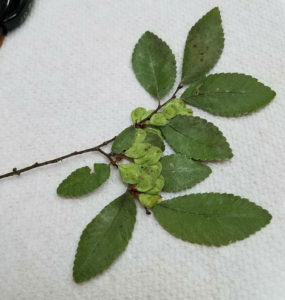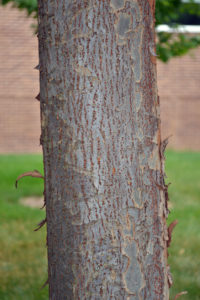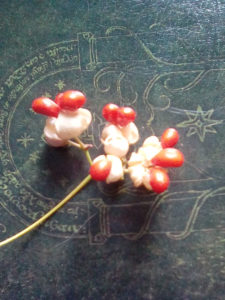Q. I have some leaves from a tree I would like to identify. It is roughly 8 to 12 inches in diameter and fairly tall. The leaves are alternating with lengths of 1.5 to 2 inches long. The leaf stalks are all really short compared to the leaf length. Can you identify? – M.R., Brookville, Indiana
A. This appears to be Ulmus parvifolia – common name Chinese elm or lacebark elm. This species is quite attractive. It grows 40-50 feet tall at maturity and has attractive small leaves and interesting mottled bark. This species is quite adaptable to urban conditions, and so far, appears to have good resistance to Dutch elm disease and elm leaf beetles. Do not mistake this species for the inferior Siberian elm (Ulmus pumila), which is far less ornamental and rather a weedy species.
The Purdue Arboretum has more information about Chinese elm, available at mlp.arboretum.purdue.edu/weboi/oecgi2.exe/INET_ECM_DispPl?NAMENUM=701.
The Missouri Botanical Garden also has some information, available at www.missouribotanicalgarden.org/PlantFinder/PlantFinderDetails.aspx?taxonid=287396.
Q. I’m attaching a picture of some berries. Can you tell me what shrub they’re from? The plant is growing as a hedge in our front yard, and we want to trim it way back this winter, but we don’t want to kill it. Many thanks for any help you can provide. – T.G.
A. That looks to be one of the Euonymus species, although I can’t distinguish enough character from this photo to be certain which. It could be Euonymus europaeus, a species introduced from Europe and more commonly known as European spindle-tree or Euonymus bungeanus (Winterberry euonymus) introduced from China.
You can see more clear images of the fruit at
https://gobotany.newenglandwild.org/species/euonymus/europaeus/
This is not the best time of year to prune any plants. It is better to wait until late winter or early spring. More information about pruning shrubs is available in a previous article at www.purdue.edu/hla/sites/yardandgarden/assess-pruning-needs-2 and in Purdue Extension publication HO-4-W, Pruning Ornamental Trees and Shrubs, available from the Education Store at edustore.purdue.edu/item.asp?Item_Number=HO-4-W.


